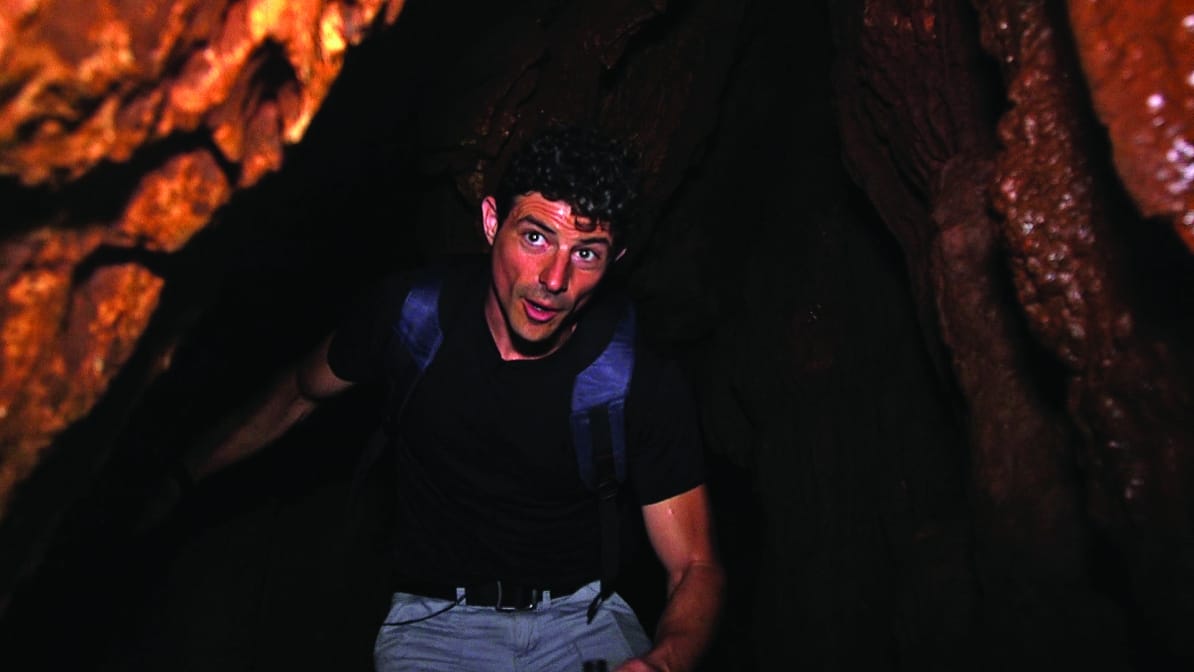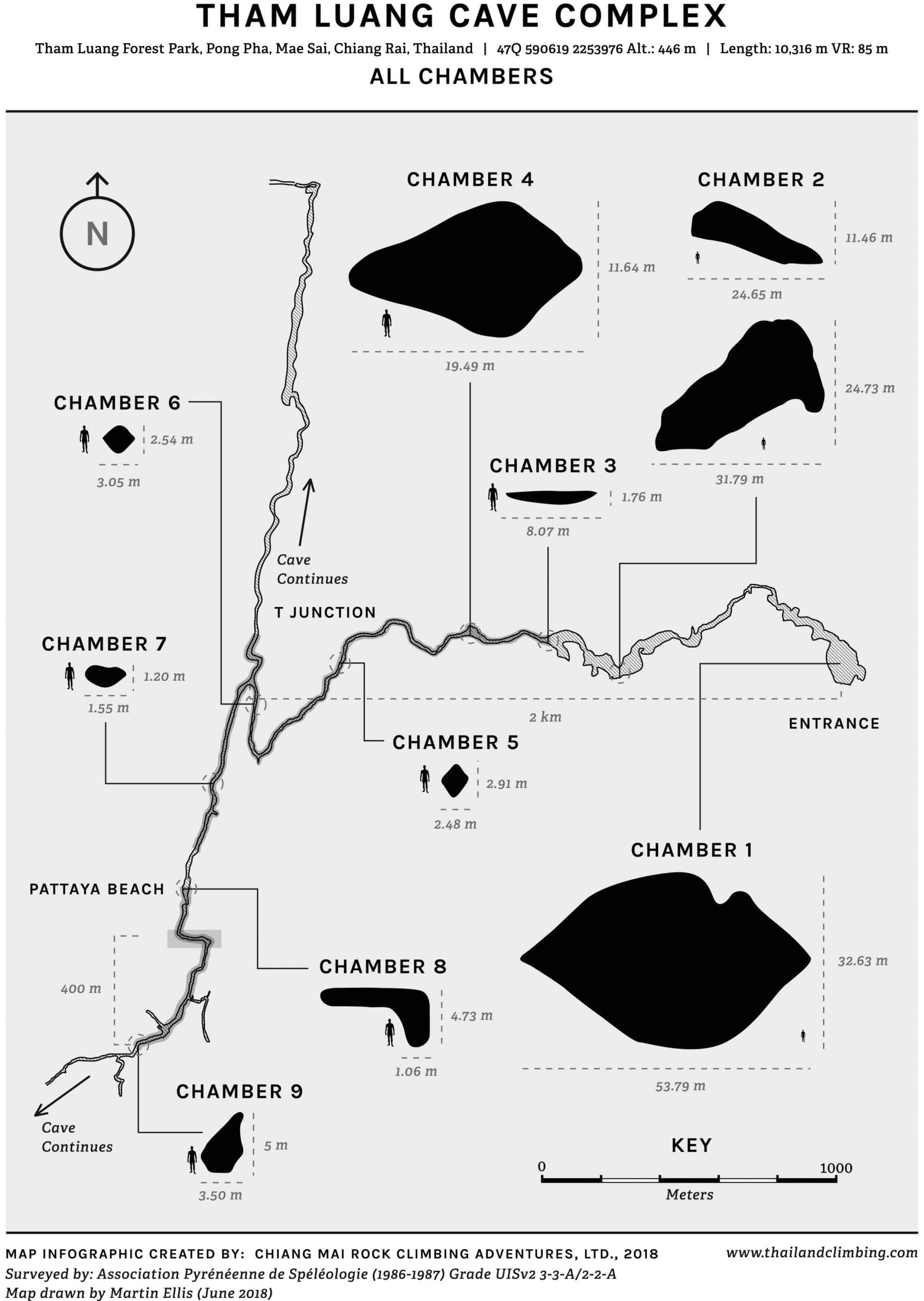Inside the Thai cave rescue
On 2nd July 2018, 12 members of the Wild Boars football team and their coach Ekapol ‘Ek’ Jantawong, were found alive deep inside a cave complex in northern Thailand by British divers John Volanthen and Rick Stanton. The boys had been trapped in Tham Luang cave for over a week after a flash flood had blocked the exit. The news that they had been found alive was initially greeted with joy, but bringing the boys – aged between 11 and 16 – out alive would be a huge challenge. ABC’s national correspondent, Matt Gutman, was at the cave complex throughout the operation and tells Marcus Webb about the incredible logistics involved in the greatest of escapes.

Matt Gutman in the Tham Luang cave complex (ABC News | Robert Zepeda)
10th July 2018 (Taken from: #32)

Matt Gutman in the Tham Luang cave complex (ABC News | Robert Zepeda)
“While the world celebrated when the 12 members of the Wild Boars football team and their coach were found, in private those involved in the rescue told me they didn’t have high hopes of successfully getting them out alive.
“The divers later told me they believed up to 80 percent of the boys would die. These were children who’d suffered tremendously over the previous two and a half weeks. They had been traumatised, deprived of sunlight and starved. The divers weren’t quite sure how sick they were, but they knew they were very frail.
“What’s more, this sort of rescue had never been done before. There was about a mile of underwater swimming from chamber nine, where the group was, to chamber three. It was pitch black, they couldn’t see anything. It was one diver to one boy, and the boys were sedated with ketamine – it would have been too distressing for them otherwise – and wearing adult dive masks.
“Ketamine is typically used in emergency rooms, but not in rescues such as this, and while it is very potent it wears off after 20 to 30 minutes. Apart from Australian dive-doctor Richard Harris none of the divers were medics and the majority had never injected another human before. They were going to have to determine how much to give the kids and when to re-dose them, in pitch blackness along the route. All of these factors contributed to their estimate that they would potentially lose up to ten boys.
“In chamber nine were the boys, Harris and a group of Thai navy Seals. Harris worked with the divers to kit up the boys who were being rescued. He gave them a Xanax first to relax them, then an injection each of ketamine and atropine, which reduces secretions so they wouldn’t choke to death on their own saliva.
“They then suited them up and bound them like prisoners with zip ties on their hands and feet. The air cylinders, filled mostly with oxygen, were fastened around their waists. It would have been incredibly uncomfortable if they were conscious; the rescuers tried to hide this process from the other boys so they didn’t panic. From chamber nine the rescue divers took the boys to manned air tank stations in the other chambers along the way where they swapped out both the divers’ tanks and the boys’ tanks. The rescuers at the stations could help the divers administer ketamine to the boys. That’s a fair amount of work and organisation they had to do in a dark tunnel.

The boys in the cave on July 2, 2018. (Xinhua | PA)
“It was very difficult for the rescue divers to know whether the boys were breathing. The water was so dark and the divers were concerned with not losing the guideline, so they often couldn’t pay full attention to the boys. One major concern was over the seals on the face-masks – these were small, emaciated boys using adult-sized masks. If water got in there, the boys could drown and the divers might not know it.
“Once the divers got the boys to chamber three they were through the hardest part. That space had dozens of people in it including Thai navy Seals and American medics. They administered the first real medical checks here and rigged the boys up to a rope-and-pulley system which hauled them to chamber two and avoided some really difficult climbing.
“They had one more dive, shorter than the others, and then the boys were taken out by Thai navy Seals and brought to the entrance of the cave. They put the boys in ambulances and sent them to hospital. It was 2,200 metres from chamber nine to the entrance. Each rescue was an eight-to-11-hour round trip and it was really touch-and-go the entire way. There were incredible risks – drowning, asphyxiation, starvation, injury. The boys or divers could have hit their heads against the walls and suffered brain damage. There are half a dozen ways they could have died while coming out of that cave.
“I’m still not sure how they all got out alive.
The divers told me that they took risks they wouldn’t have otherwise taken because these were children. What makes this story so astounding is that with all of the technology and resources and money thrown into the rescue, it ultimately came down to some incredibly brave divers just carrying the boys out.”


Matt Gutman is the author of ‘The Boys in the Cave: Deep Inside the Impossible Rescue in Thailand’ published by HarperCollins and available now. For more on the Thai cave rescue – including an exclusive piece of graphic journalism illustrating the rescue – get issue 32 of Delayed Gratification magazine, available from the shop now.
Slow Journalism in your inbox, plus infographics, offers and more: sign up for the free DG newsletter. Sign me up
Thanks for signing up.








